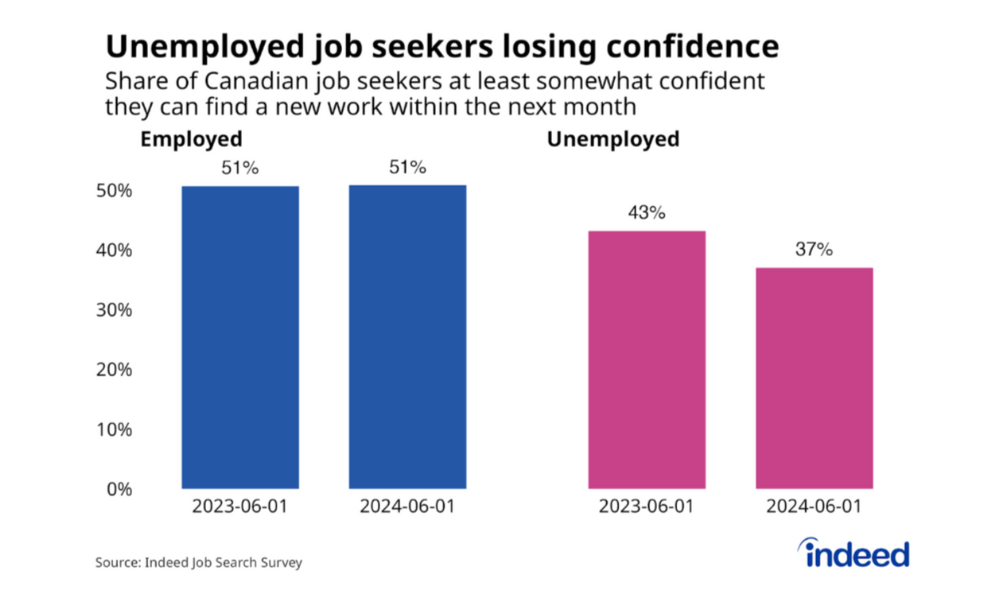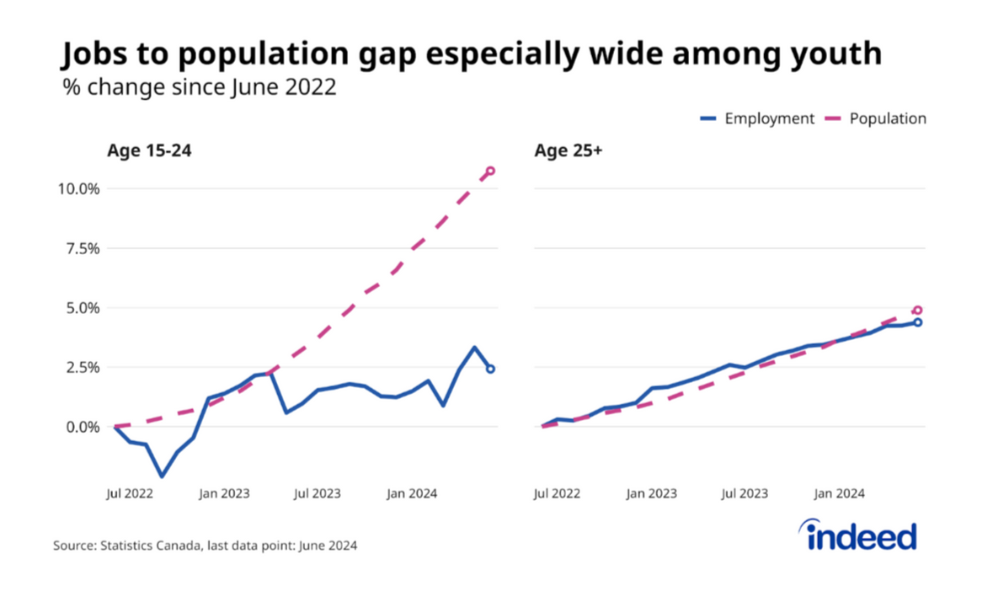Job growth in many industries ‘lukewarm’ while some sectors see declines

Finding employment in Canada is becoming a bigger challenge, and those who currently do not have jobs are losing confidence they’ll be employed soon, according to a recent report.
Overall, the percentage of unemployed Canadians who were confident they could find a new job within the next month dropped by six percentage points from June 2023 to June 2024, according to Indeed.
Meanwhile, the level of confidence held steady for employed Canadians.

This comes as the unemployment rate in Canada is drifting higher, reaching 6.4 per cent in June, the highest jobless rate (outside of the pandemic) since late 2017.
“Not many industries have posted strong gains lately,” according to Brendan Bernard, senior economist at the Indeed Hiring Lab.
“According to the Survey of Employment, Payrolls, and Hours (SEPH) — which is less volatile at the industry level than the LFS — healthcare and social assistance, together with education, accounted for more than half of net job growth over the three- and six-month periods through May 2024. Job growth in most other industries has been lukewarm, and a few sectors (including retail trade), have declined since the end of 2023.”
Overall, Canada lost 1,400 jobs in June following an increase of 27,000 in May, according to Statistics Canada (StatCan).
Job postings continue to decline
Another factor in the increasing unemployment rate is that the number of job postings continues to drop, according to Indeed.
As of late July, Canadian job postings were four per cent below their February 2020 level.
In 2023, job postings were at about 170 per cent above the February 2020 level. That, however, has continuously dropped, according to the report.

“The downshift in hiring appetite has been broad-based. Job postings in half of occupational sectors tracked were either at or below their pre-pandemic level,” said Bernard.
“And some are down significantly, including the software development sector, where postings in late July were 32 per cent below pre-pandemic levels. Other categories have held up better, but the trend is pointing in the same direction. Only a few occupations, mainly in health care, such as nursing, have postings that still substantially exceed their pre-pandemic levels, and have held relatively steady amid a cooldown across most of the economy.”
More than half (52 per cent) of employers plan to create new permanent positions, while 41% intend to fill vacated roles in the second half of 2024, according to a Robert Half report.
Population gap, youth unemployment
The Canadian youth are most particularly being hit by unemployment, according to Bernard.
In May 2024, the job vacancy rate for these workers stood at 3.1 per cent. Meanwhile, the youth unemployment rate stood notably higher, at 12.6 per cent.

“Soaring youth population growth is a likely driver of the cohort’s outsized jump in unemployment,” he says.
“The number of 15-24-year-olds in Canada jumped 7.3 per cent year-over-year in June, according to the LFS, far outpacing the (still elevated) 2.8 per cent growth among those over age 25. Amid falling demand, the surge in newcomers wasn’t accompanied by more people working, including in many of the industries that typically employ non-permanent residents. Instead, youth unemployment is up across the board, among recent arrivals, longer-tenured immigrants and those born in Canada.”




